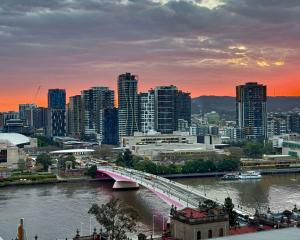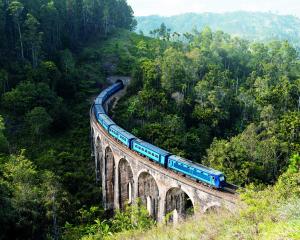
On a chilly February evening, people gathered on the platform at Matsue station waiting for the Sunrise Izumo to Tokyo. The overnight journey of more than 11 hours seemed very popular, despite there being faster ways to travel. Our train arrived punctually, the driver just visible through a window high in the locomotive. It was a solid train, made for travelling across mountains, unlike the streamlined shinkansen trains that speed between Japan’s major cities.

One guy was stretched out under his blanket, appearing to be asleep already, even though it was only 7.30pm. He would have boarded the train at Izumoshi station, its starting point half an hour down the line. I’d been there a couple of days before to see Izumo Taisha shrine, one of the oldest Shinto shrines in Japan.

Once the train got under way, I went to explore the other cars. I’d bought a bento meal from a department store food hall in Matsue, and I looked for somewhere to eat it. Walking along narrow corridors, I could see inside some of the private compartments. They were slightly bigger than the bed, with just enough space for the extra luxury of a pair of slippers.

The museum’s garden has been voted the best in Japan for 20 years running. The garden is designed for looking at, not walking in, with manicured shrubs and perfectly placed rocks visible through picture windows in the galleries. I bought coffee and cake in the elegant tearoom so I could admire the vista over the pond garden for a while, and watched the koi carp swimming slowly around in their heated pond.

After stopping for only moments at Yasugi, the train moved off again. Car 3 was not a social hub, with only two other passengers there. The Sunrise Izumo didn’t offer any meal service or bar, only a vending machine with a limited selection of cold drinks — tea, Coke, water, and a ginseng energy drink called Real Gold. A machine dispensed cards for the nearby showers, but I decided against paying $4 for six minutes of water. Showering in a confined space while trying to keep my balance didn’t appeal to me.
I headed back to my compartment, awkwardly squeezing past the two women in the neighbouring berths as they headed towards Car 3. They were young, like most others in the nobi nobi car. More passengers had unrolled their bedding and were lying down. The conditions seemed less than ideal for sleeping, as overhead lights shone in the corridor and local trains clattered past, their passengers gazing out the window.
THE Sunrise Izumo is an express, only stopping at selected stations. An ascending chime followed by an announcement in Japanese and English marked each one. Yonagu, Niimi, Bitchu-Takahashi — the names were familiar from my journey to Matsue three days earlier on the Yakumo Express. I’d looked out the window at snowy landscapes as the train wound through the mountains. Even though it’s close to the coast, there was still snow on the ground when I arrived at Matsue.



Half an hour later the train arrived in Okayama, a major rail junction and shinkansen stop. Despite the cold, there were a few train geeks with their cameras ready, awaiting our arrival. They were there to see the Sunrise Izumo join with the Sunrise Seto from Takamatsu, the only other scheduled sleeper train in Japan, to form a single train travelling to Tokyo. Our train eased along the platform until a sharp bump marked its coupling with the Sunrise Seto.
The station announcements ceased after we left Okayama and when we stopped at Osaka after midnight, the station was almost deserted. The last passengers boarded our car, a family with two primary school-aged children. This surprised me, as the shinkansen takes less than three hours from here but the Sunrise still has almost seven hours to go, so it would be a long trip for them.
I managed to sleep during the night, occasionally waking when we stopped. Cleaners and maintenance workers were busy in deserted stations.












